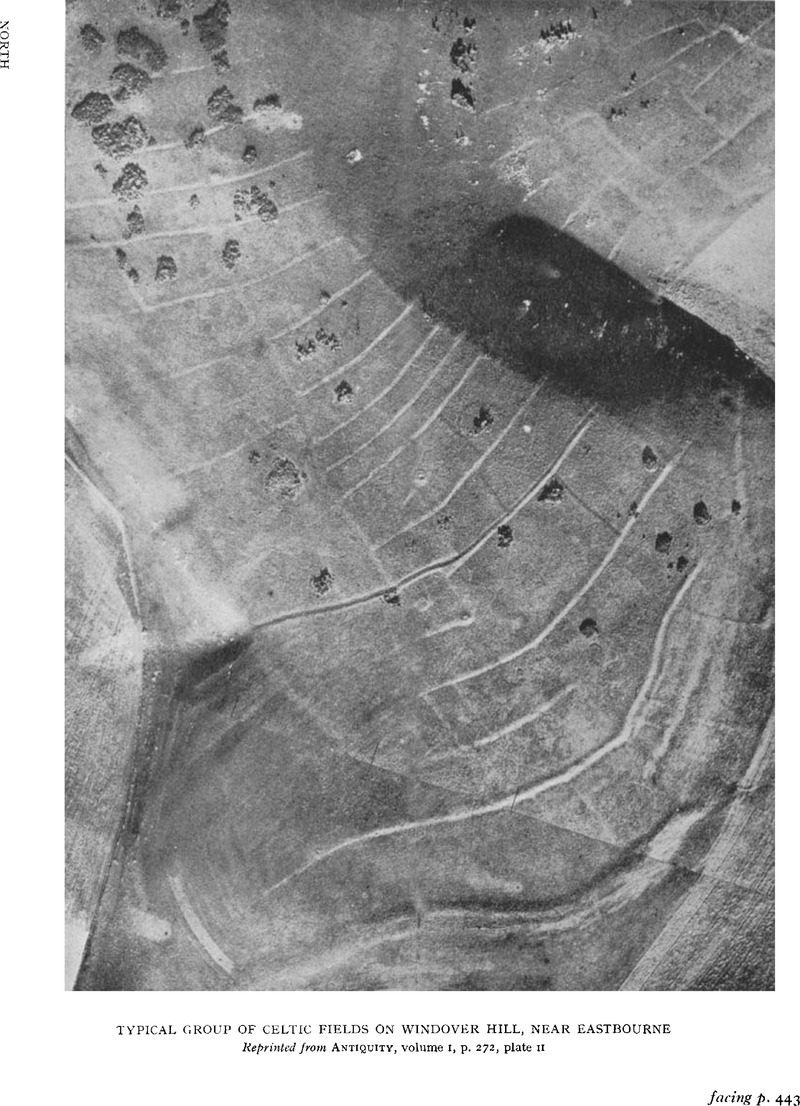Published online by Cambridge University Press: 02 January 2015

1 Curwen, E.C., ‘Prehistoric Agriculture in Britain’, ANTIQUITY, 1927, 1, 261–289 Google Scholar ; Cunven, E.C. , ‘Air-Photography and Economic History’, (Econ. Hist. Soc., 1929 Google Scholar) ; Report of the 39th Congress of Arch. Societies, 1931, 30-35.
2 Crawford, O.G.S. , Air Survey and Archaeology, 2nd edition, 1928 Google Scholar ; Crawford, O.G.S. andKeiller, A., Wessex from the Air, 1928.Google Scholar
3 Celtic Earthworks of Salisbury Plain ; Old Sarum Sheet. Ordnance Survey, 1934.
4 Sussex Archaeological Collections, 1935, 76, 35–45 Google Scholar.
5 Antiquaries Journal, 1933, 13, 109–51.Google Scholar
6 Brighton and Hove Archaeologist, 2, 29–40 Google Scholar ; III, 62-74.
7 Sussex Archaeological Collections, 1877, 18, 65.Google Scholar
* Opinions differ about the purpose of these earthworks ; the moot theory is not generally accepted.—EDITOR.
8 Holleyman, G.A. and Curwen, E.C. , ‘Late Bronze Age lynchet-settlements on Plumpton Plain, Sussex’, Proc. of the Prehist. Soc., 1935.CrossRefGoogle Scholar
9 A bivallate road is a slightly hollowed track between two low banks. A doublelynchet road is a track along a hillside between a positive lynchet above and a negative lynchet below. Terrace-ways have, as a rule, been engineered and are not the result of ploughing.
10 Brighton and Hove Archaeologist, 3, 28–41.Google Scholar
11 Archaeologia, 1927, 72, 1–40.Google Scholar